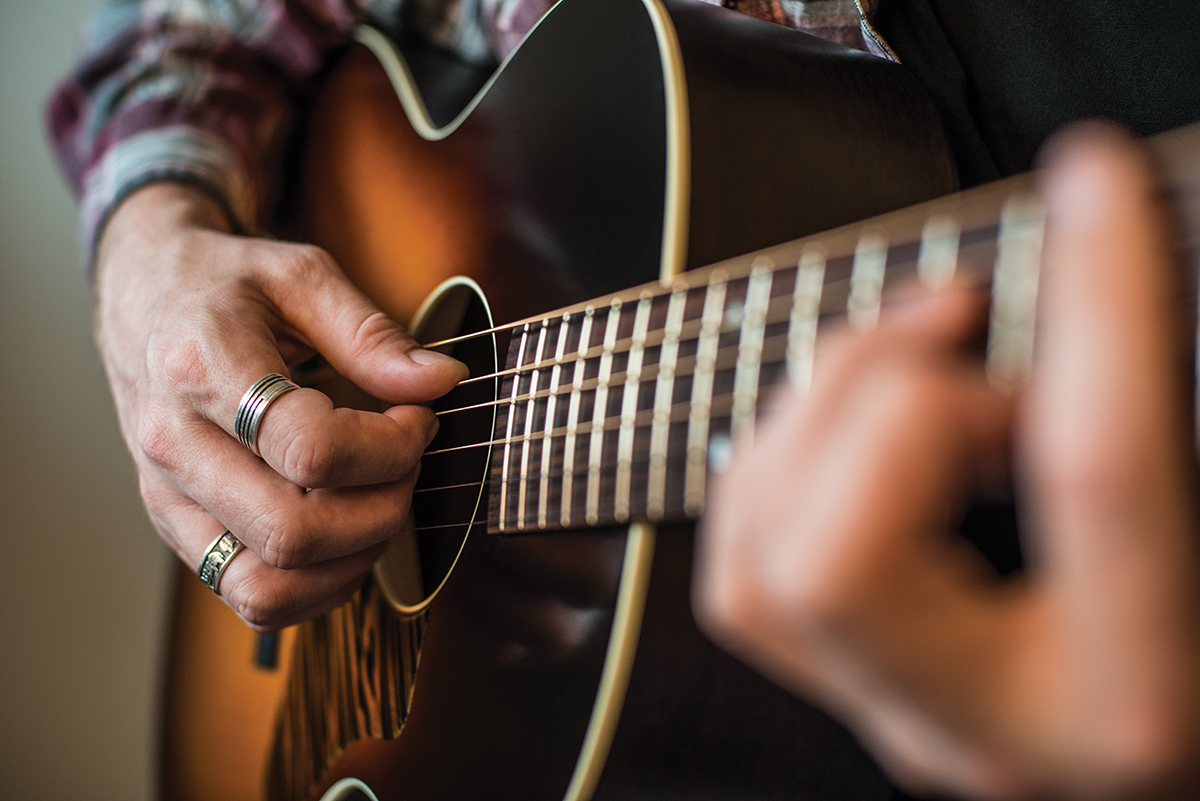Related Tags
Essential Blues Guitar Lessons Part 1: The 12-bar blues
In this first lesson in our exclusive new tuition series, MGR Music tutor Leigh Fuge explains the classic 12-bar blues and shows you how you can take three chords and get your blues playing kick started…

If you’re a fan of blues music and play the guitar, you have almost certainly heard of the term ’12-bar blues’. But what is it? The 12-bar is a chord progression, and its cycling pattern is the heart and soul of blues music. Most blues guitarists through the ages have historically leaned on this 12-bar concept to create the backbone for their songs, and everyone from Muddy Waters and Howlin’ Wolf to Eric Clapton and BB King have used it to build their hits.
The blues in it’s simplest form will only require three chords. As with most theoretical ideas in music, we’ll be calling on the major scale to give us the chords to work with. This lesson will be in the key of A so we will be using the A Major Scale to obtain the chords we need.

What we are looking for here is to pull out the three chords that give the blues its familiar, repeating progression. You may have heard of this term before, but what we’re looking for here is the ‘I-IV-V’ chord progression. In our case, as we’re in the key of A it will be:

If we want to play a blues in the key of A, all we need is these chords. Using the interval number, the chords will fit into our 12-bar structure as follows. This will be the structure for not only this lesson, but the roadmap to everything you will see on your blues journey:

If we apply the I, IV and V chords we took from the major scale earlier in the lesson, we can populate our 12-bar chart as follows:

This 12-bar progression now forms our blues track. You can repeat that progression as you see fit with whatever rhythmic and chordal choices you feel appropriate. The 12-bar blues is a very open-ended style of playing, once you know the formula you’ll be able to adapt it in many different ways by changing the rhythm, substituting chords for other chord types and embellishing the rhythmic parts with lead accompaniments.
To get a feel for the progression, take the chords you find (in the case of this lesson A, D and E) and play them as either major chords or just power chords. Keep the rhythm simple, play in 4/4 time and play one strum per beat. This will help you get a feel for the pattern and how it moves through the different chord changes. Even playing it with simplified rhythms should instil the sound of the blues in your ear.
TRY IT YOURSELF
Try to find your I, IV and V chords in other keys.
In the next lesson we will start to look at the rhythms commonly found in blues music, and then put it all together to turn these three chords into a fully-fledged blues track.

ABOUT THE AUTHOR
Leigh Fuge is a guitar teacher and professional musician from Swansea in the UK. He has taught hundreds of students face to face and via the MGR Music platform. He has over 10 years’ experience working in the industry as a touring musician, session guitarist and teacher. To find a qualified guitar tutor in your area, visit mgrmusic.com.
